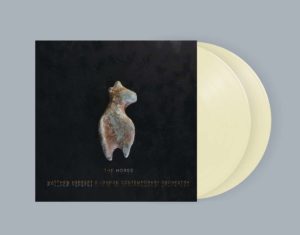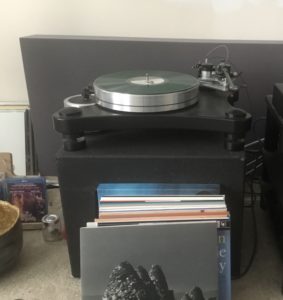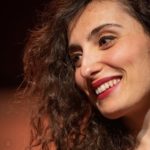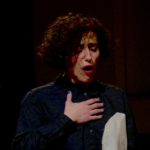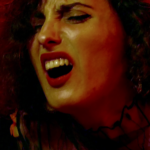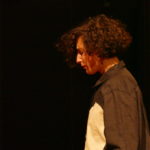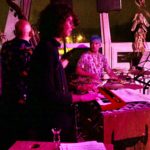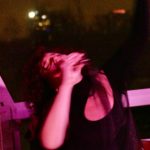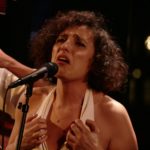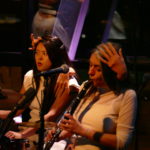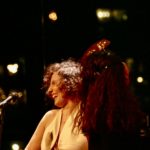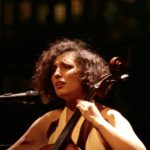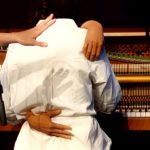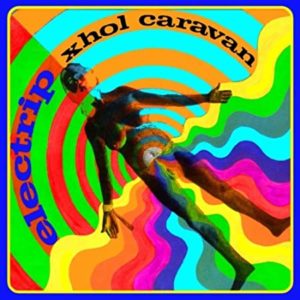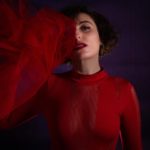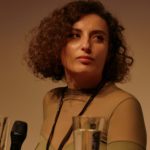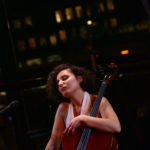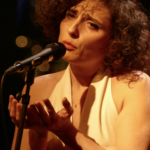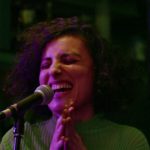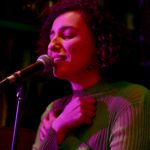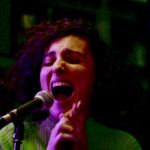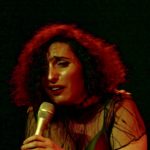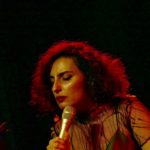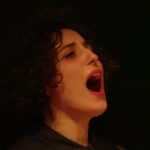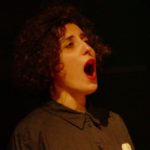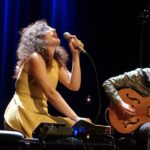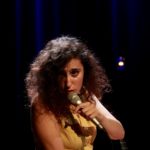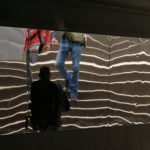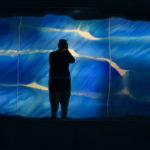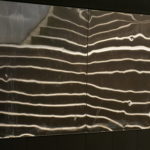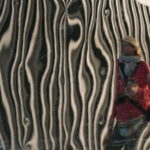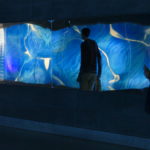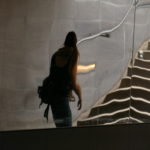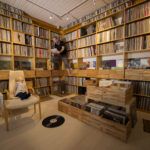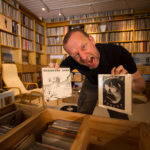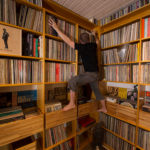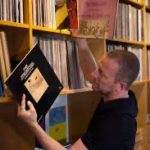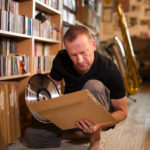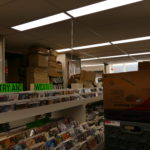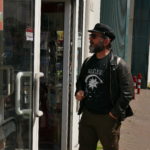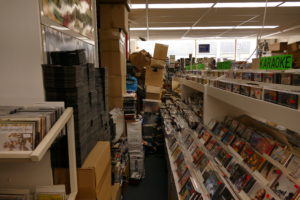I experienced and learned a lot about the gifted musical spirit, human being and almost endlessly surprising personality of Sanem Kalfa, who comes from Trabzon on the southern Black Sea coast, from attending concerts, from extended conversations and from performing with her. Kalfa has now been living and working in Amsterdam for 12 years after studying music in Ankara and Groningen.
En route
After opening the (post-Covid) series of REFLEX commissions at Amsterdam’s BIMhuis in March 2022, this June, Sanem Kalfa will be the Artist in Focus at North Sea Round Town (NSRT). NSRT is a two-week city festival in Rotterdam (June 22-July 9) and precedes the huge three-day commercial North Sea Jazz Festival held indoors. A community-based festival, NSRT extends throughout the city of Rotterdam, including farmhouses on the green outskirts. The Rotterdam part of InJazz, the Dutch showcase festival (June 22-23), is integrated into NSRT. InJazz itself opens at Amsterdam’s BIMhuis on June 21.
During her North Sea Round Town residency, Sanem Kalfa will give a fairly large number of concerts and run site-specific projects in collaboration with dancers and musicians. In her Invisible Columns Dream Project, she will work and perform with the likes of trumpeter Ambrose Akinmusire, electronics wizard Jan Bang and master of organ and keyboard Kit Downs. She will furthermore appear with exquisite pianist Marta Warelis and stormy bass force Ingebrigt Håker Flaten in her new group Televisyon and form duos with violinist/guitarist George Dumitriu and rising trumpet star Peter Somuah to name but a few. Rotterdam musician Somuah, of Ghanaian origin, is a premiering ACT musician, whilst the duo with George Dumitriu is her longest collaboration to date and she and Dumitriu will be introducing new work in Rotterdam. At InJazz she will be playing with her all-female group Miraculous Layers made up of saxophonist Tineke Postma, pianist Marta Warelis and drummer Sun-Mi Hong (June 21, BIMhuis).
Phenomenon
Musician Sanem Kalfa (voice, violoncello) is a phenomenon; strong and colourful, yet as vulnerable as a free bird. Performing in a continuous, unstoppable flow, at once close by and far away, she juggles different internal and external forces and sources: what’s in the now, what she is inclined to bargain with, how she intends and is able to impinge on the air and on the vibration of surrounding souls, how she realises herself by giving colour, motion and sensation to lasting moments.
If you were to put these elements into an artificial intelligence program, you would need quite high-powered computation of complex interactions. It would then be hard to restrict the generative power of that AI. You would not only have to specify the different vectors and their strength; you would also have to specify the range of freedom and the intuitive decisions leading to moment-to-moment cohesion and coherence. In this case, the issue with AI is its computational model. This cannot easily model the flow characteristics of the original by means of high-density, rapid computation. The system would require numerous fine-tuning steps and an enormous capacity for learning. It would be a long, long road to achieve the creative forces of the original, especially its flow characteristics.
Kalfa’s vocal range, flexibility and inventiveness is astonishing and, after winning the Vocal Competition at the Montreux Festival (under the auspices of Quincy Jones) in 2010, she could have taken a conventional career path. However, she moved to Amsterdam to develop, blossom and find her way up from the grass roots of a lively scene by interacting with other art disciplines. A recent example of interdisciplinary work is her collaboration with choreographer Alexis Blake in Blake’s performance piece entitled “rock to jolt [] stagger to ash”. There are further examples of collaboration with dancers which will also play a role in her NSRT residency.
For her REFLEX commission at BIMhuis, she collaborated with fine artist Ilgen Arzik to design and create not just a conventional static stage set, but also a moving scenario, with the musicians as both sound-makers and visual vectors. For the mobile 10-piece vocal ensemble August 38th, she did the same herself with the design for the musicians’ configurational stage clothing. The huge location for her Rotterdam Dream Project, the Van Nelle Factory, will also give her the incentive to design it specifically as a scenic performance space. In short, she is one of those musicians who thinks and behaves multidimensionally – like Julien Desprez, Pedro Melo Alves, George Dumitriu or Sun-Mi Hong, for example.
As you can see, there are many more sides to Kalfa as musician/artist than the purely conventional role of singer; nor can she be pigeon-holed as a ‘voice artist’. The faculties and qualities of her voice are activated in order to express internal emotion.
Sound-making: sources, secrets
Kalfa works in manifold ways, with her whole body radiating to bind completely both internal and external aspects of expressing oneself, including facial expressions and gestures. She slips into the skin of a song or makes her own skin part of the song’s vibrations and movements.
As an artist, she is interested in the secrets and wonders of the human mind and the soul – its gorgeous as well as its painful aspects. Her work with her singing voice, her work of composing and performing music, both alone and with others, is a means of exploring, discovering, articulating and giving expression to this and of celebrating those realms and spheres. As a listener, you are at permanent risk of being confronted with all the terrifying and extraordinarily beautiful qualities of sounds outside the conventionally-shaped, socially-channelled ones. For Kalfa, singing a song is not simply a matter of repeating a received form which has been handed down, but of finding out about its layers by making room for vocalizing and articulating the inner and outer voice(s), confronting the self and mediating it by means of the collective mind and the conventional. This might sound ‘heavy’, but it’s never a clinical study, always a playful, lusty, joyous game using a faculty we are endowed with by Nature. It also means diving into sources our body has received and recorded from our earliest states of being up to recent sensations and confusion including echoes from an even remoter past.
Asked about her preferred method of sound-making, Kalfa said:
“I’m quite fascinated by the ‘discovery’ part of sound-making. Because there are countless possibilities for making sound using our bodies.”. She follows this up by emphasizing: “I try to be as effortless as possible and to enjoy the ensuing creation as it comes.”
This short sentence contains her artistic credo as manifested in her artistic practice. It means that she relies on what is deeply absorbed, intuitively accessible and can be applied organically. The sentence also contains the related belief that this should happen on a moment-to-moment basis, relying completely on those deeper sources. The emerging flow is a strong musical force but can also be disrupted by external or internal interference (such as a shift to a more conscious mode of anticipation and planning).
-
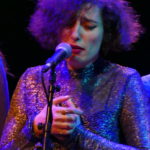
-

-
Liva Dumpe-Sanem Kalfa-Marta Arpini
-
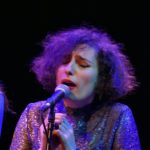
As part of the process, Kalfa is a highly context-sensitive voice with a powerful ability to flip and to integrate unforeseen situational elements. The fact that Kalfa is a vocalistic, theatrical being with rich abilities, bold and natural, and keeps herself open, makes her a performer who surprises and astonishes time and again. At the same time, it is hard to predict and describe in detail what she will do in a subsequent performance. For example, it would be an inherent contradiction to describe in detail what is going to happen in the Invisible Columns project: describing it in concrete terms, in detail, would have a pre-structuring effect and as a consequence, would reduce or erase the confrontational experience of detecting and becoming aware of the invisible.
To take a small example of this unpredictability from Sanem Kalfa’s concrete performance practice: in an improvised duo performance with pianist Harmen Fraanje, in which she was using electronics, the electronics failed just after the musicians started. This made the need to improvise much more real. After a few moments of trying to fix it, she abandoned the tool and relied solely on her natural vocal abilities and qualities. It was surprising for the audience, yet natural for her to deal with it in an improvisation situation. Things like this can happen at any time in real life, and she knows very well that it’s part of the game. Another example was at a concert in Germany when she ‘integrated’ the sounds penetrating from a nearby skating hall. At the same concert, she read poetic words from a notebook. At the end of the reading, she let the notebook fall to the ground in perfect time with the continuing music. This context-sensitivity is a fixed feature of her performance style.
to be continued tomorrow
all photos ©️FoBo_
